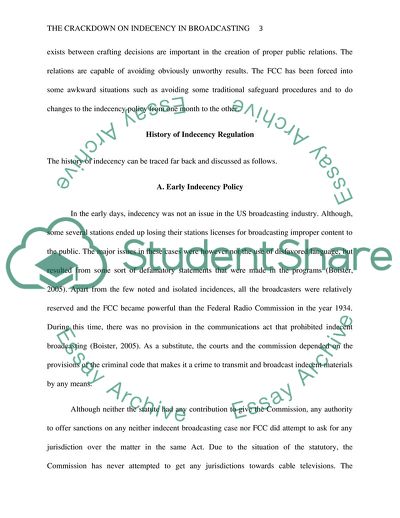Cite this document
(Crackdown on Indecency in Broadcasting by the FCC Case Study Example | Topics and Well Written Essays - 2500 words, n.d.)
Crackdown on Indecency in Broadcasting by the FCC Case Study Example | Topics and Well Written Essays - 2500 words. https://studentshare.org/media/1862174-the-crackdown-on-indecency-in-broadcasting-by-the-fcc
Crackdown on Indecency in Broadcasting by the FCC Case Study Example | Topics and Well Written Essays - 2500 words. https://studentshare.org/media/1862174-the-crackdown-on-indecency-in-broadcasting-by-the-fcc
(Crackdown on Indecency in Broadcasting by the FCC Case Study Example | Topics and Well Written Essays - 2500 Words)
Crackdown on Indecency in Broadcasting by the FCC Case Study Example | Topics and Well Written Essays - 2500 Words. https://studentshare.org/media/1862174-the-crackdown-on-indecency-in-broadcasting-by-the-fcc.
Crackdown on Indecency in Broadcasting by the FCC Case Study Example | Topics and Well Written Essays - 2500 Words. https://studentshare.org/media/1862174-the-crackdown-on-indecency-in-broadcasting-by-the-fcc.
“Crackdown on Indecency in Broadcasting by the FCC Case Study Example | Topics and Well Written Essays - 2500 Words”. https://studentshare.org/media/1862174-the-crackdown-on-indecency-in-broadcasting-by-the-fcc.


